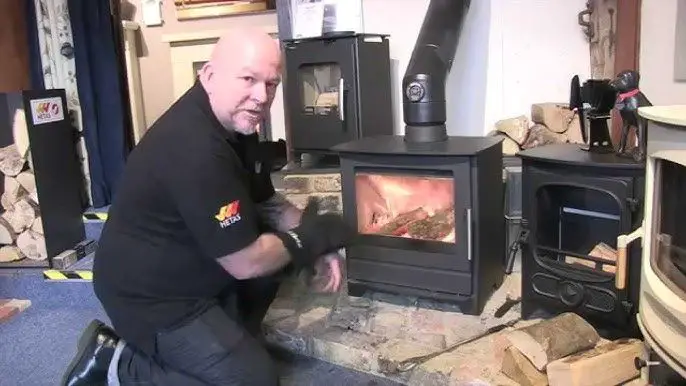Why Is My Candle Producing So Much Soot?
What is Soot?
Soot is the black particles emitted from a flame. It is composed of unburned carbon that has not been fully combusted into carbon dioxide. The small particles of soot result from incomplete combustion of a fuel source like candle wax.
As the wax melts and vaporizes, the vapors mix with oxygen to sustain the flame. When there is not enough oxygen for complete combustion, some of the carbon is left unburned and forms the black soot particles before escaping into the air.
The soot particles give off the signature black smoke that is characteristic of incomplete combustion. This smoke can dirty the walls of the room and fabrics. The particles are very fine and can be difficult to remove once settled.
Causes of Soot
There are several common causes behind sooty candle issues that stem from the wick, airflow, or wax itself.
Wick is too long or large
The most frequent culprit behind candle soot is a wick that’s too large or long for the candle jar or melt pool. This oversized wick creates larger flames that in turn produce more soot.
Burning candle in still air
Stagnant air around a burning candle can lead to incomplete combustion and increased smoke. Soot needs sufficient airflow to fully burn off. Try moving the candle or opening a window.
Burning multiple wicks
Candles with two or more wicks often generate more soot as the flames compete for wax and oxygen. Burn fewer wicks at a time or space out multiple wick candles.
Candle wax contaminated
Dirt, dust, oil, or other contaminants present in the candle wax can also create excess soot. Avoid lighting candles that have debris on the wax surface or seem lower quality.
Wick Issues
The wick is one of the most common culprits for producing excess soot. Cotton wicks tend to produce more soot than paper or wood wicks because cotton has a higher rate of blooming. This means the wick expands as it burns, creating a larger flame and more unburned carbon. Old wicks also create more soot since they bloom more over time. Using wicks with too many strands can also lead to incomplete combustion and increased soot.
To prevent wick issues, trim your wick to 1⁄4 inch before each use and replace it frequently, at least every 5-10 hours of burn time. Wicks soak up melted wax, dirt, and carbon over time, making them prone to smoking. Switch to a lower-soot wick like wood, paper, or braided cotton. The best wicks have a flat braid design that curbs mushrooming at the tip. Lastly, match your wick size to the candle diameter – a too-large wick creates excess soot.
Insufficient Airflow
One of the most common causes of soot is insufficient airflow around the candle. Candles need oxygen to burn properly, just like any other flame. If there is inadequate air circulation in the room or if the candle is blocked from getting enough airflow, it can begin to produce extra soot.
Burning a candle in an enclosed space like a candle lantern or small glass container limits the supply of fresh air for the flame. The candle can start to smolder and create more soot when oxygen runs low. Make sure to leave the top open or provide ventilation holes so plenty of air can reach the flame.
Lack of air circulation in general can also lead to excess soot. Stagnant air prevents fresh oxygen from getting to the candle. Set candles in a spot with good airflow in the room. Avoid cramped corners or setting anything directly next to the candle that can block air movement.
Placing decor items, other candles, or anything else too close around a burning candle can obstruct air supply. Give candles breathing room so the flame has access to sufficient airflow from all directions. Keep at least a few inches cleared around candles and move anything blocking the flame.
Contaminated Wax
One of the most common causes of excessive soot from a burning candle is contamination in the wax itself. There are a few ways wax can become contaminated and lead to sooty smoke:
Dirt or debris in wax – Wax that contains impurities like dirt, dust or debris can clog the wick as it burns, preventing smooth wax pooling and clean combustion. Things like plant matter, bugs, hair and more that fall into wax as it’s being made can cause soot if not filtered out properly.
Old or spoiled wax – Candle wax can go bad over time, especially if stored improperly. Heat, light and oxygen exposure can cause wax to oxidize, changing its chemical structure. Old, expired wax tends to burn dirtier.
Cheap/low quality wax – Not all candle waxes are created equal. Lower grade waxes, like paraffin, are more likely to produce soot than higher quality waxes like soy, beeswax or palm. Cheap candles made with substandard waxes often generate more black smoke.
Preventing Soot
There are a few key things you can do to prevent soot from forming when burning a candle:
- Trim the wick to 1/4 inch before lighting. Long wicks produce excess soot.
- Use the appropriate wick size for your candle – follow manufacturer recommendations based on wax type, diameter, etc.
- Allow proper airflow around the candle as it burns. Insufficient oxygen creates more soot.
- Use high quality, clean wax. Contaminants in reused wax can lead to soot.
By taking these simple precautions, you can maximize your candle’s burn time while minimizing smoke and soot.
Removing Soot
If your candle develops soot, the first step is to blow out the candle and trim the wick. This will prevent any further soot from forming as the candle continues to burn. Next, you’ll want to gently wipe away any existing soot on the jar, melted wax pool, or other surfaces.
Use a soft paper towel or cloth to gently blot and wipe the soot away. Try to avoid rubbing too vigorously, as this can scratch the candle surface. For stubborn spots of soot, you may need to use a little elbow grease. Wear gloves if needed to prevent soot from getting on your hands.
Gently rub the candle wax itself to help absorb and lift away the soot. The warmth from your hands can slightly melt the wax, helping it pick up the fine carbon particles. Work in a gentle, circular motion to lightly rub the wax and lift the soot away.
Take care not to rub so hard that you remove large areas of wax. Work patiently and methodically to remove all traces of soot from your candle. With some gentle effort, you can restore your candle’s clean appearance and enjoyable scent.
Health Concerns
Soot particles can be harmful if inhaled. The small particle size allows soot to penetrate deep into the lungs. Studies have shown exposure to soot can cause irritation in the lungs, bronchitis, wheezing, shortness of breath, and worsened asthma symptoms.
Soot particles and smoke from a sooty candle can also irritate the eyes, causing redness, dryness, and tearing. Those with pre-existing respiratory conditions like asthma and COPD face an increased risk of complications from inhaling soot particles.
Prolonged exposure to soot raises the lifetime risk of respiratory issues. It’s important to avoid inhaling soot from candles, and to ensure your home has proper ventilation when burning candles to allow soot particles to disperse.
When to Discard Candle
If soot continues to be an issue after trimming the wick and improving airflow around the candle, it’s a sign the candle may need to be discarded. Old, frayed or thick wicks that have been trimmed multiple times can lead to excessive soot. If the wax has become discolored, dried out or contaminated, this can also cause ongoing sooting problems.
When a candle is past its prime, it’s best to stop lighting it and safely discard it. Continuing to burn a candle that persistently emits black smoke and soot is not recommended. The soot released into the air can pose health hazards if inhaled. Discolored, dried out wax also provides inferior performance and increased risk of sooting.
Rather than struggle with a candle that refuses to burn cleanly, it’s advisable to discard it and start fresh with a new candle. Seeking out higher quality candles made with pure ingredients can also help avoid sooting issues in the first place. But when all troubleshooting measures fail, discarding a problem candle is the safest solution.
Summary
In summary, the main causes of soot production in candles are improper wick length, insufficient airflow, and low quality or contaminated wax. Soot results when the candle isn’t able to burn efficiently and completely. To prevent soot, always trim the wick to 1⁄4” before lighting, keep the candle away from drafts, and use high quality, clean wax. Prolonged soot exposure can present health risks, so discard any candles that continue producing thick, black smoke.
Soot contains carbon particles and gases that can irritate the eyes, skin, and respiratory tract. Short-term exposure may result in coughing or irritation. Long-term exposure may exacerbate respiratory conditions like asthma. If a candle persists in producing sooty smoke, it’s best to stop using it and discard it to avoid continued exposure.
In summary, with the right wick length, airflow, and wax quality, you can prevent sooty buildup on your candlewick and walls. But if those measures don’t work, be aware of the health risks associated with soot and don’t hesitate to throw the candle away.


